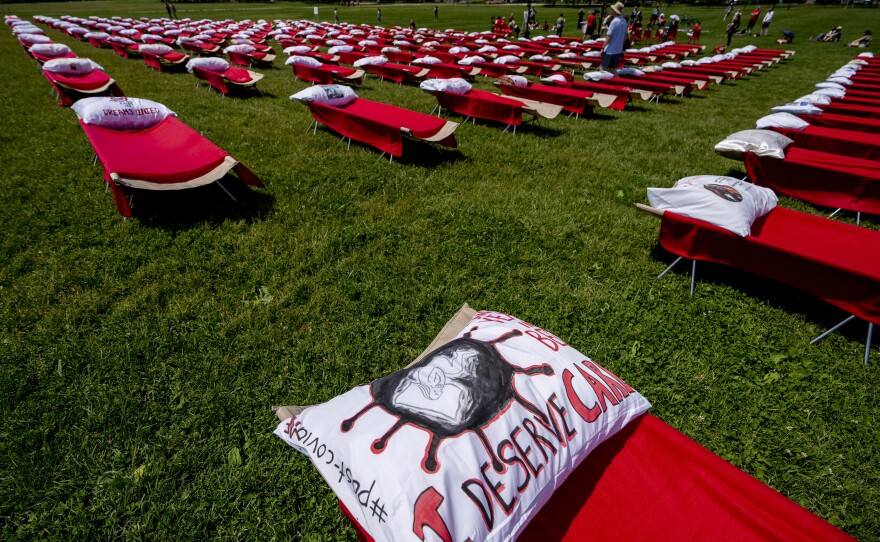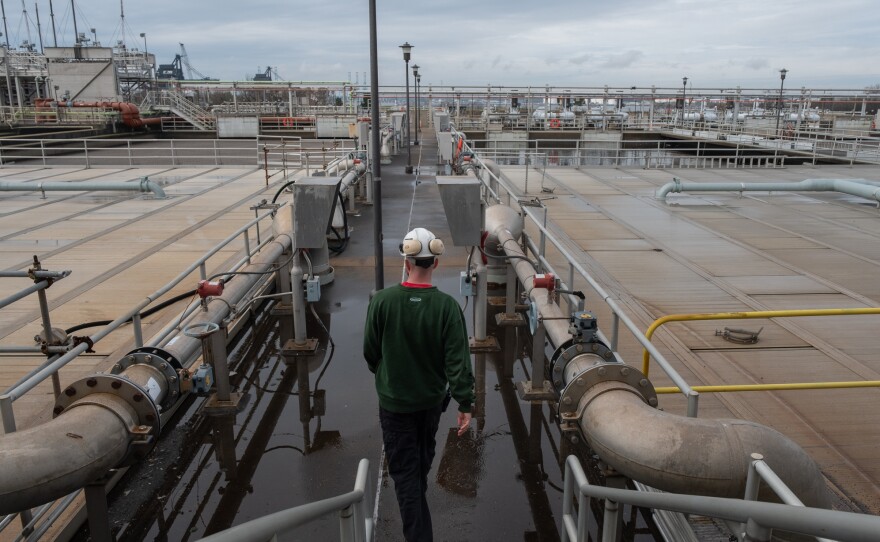In spring 2023, COVID hospitalizations and deaths hit their lowest levels since the start of the pandemic. Masks came off and schools and some workplaces were back in person. The nation emerged from the three-year COVID nightmare – and entered a tentative, new normal.
And with the official end of the federal public health emergency in May, the U.S. health care system reverted to the way it usually works: People's health insurance, or lack of it, once again dictates their access to COVID-related tests, vaccines and soon – in 2024 – to treatments.
"Our health care system has well-known and documented disparities," says Dr. Mandy Cohen, who took the helm of the Centers for Disease Control and Prevention in July. "So when we go back to the 'normal course of business,' it doesn't make for the equitable distribution of things."
While business-as-usual resumed for many, the country was permanently changed in blatant and subtle ways that are still shaking out. Here are stories on the COVID beat from NPR's health reporters that show some of the lessons learned – and not learned — as the pandemic evolved in 2023.

As 'normal life' returned, some felt left behind
For many, school and work and social lives and travel resumed freely. For some – living with compromised immune systems or long COVID or grief – the world seemed to surge ahead without considering them. As the public health emergency ended, children reflected on lost parents, nurses remembered lost colleagues and individuals grappled with how their health, careers, families, society and lives were forever changed.

Scientists tackle the mysteries of long COVID
For the millions of people in the U.S. living with long COVID symptoms such as brain fog, poor sleep and pain, better understanding of the disease and treatments can't come soon enough. In 2023, researchers made headway in discerning in detangling theories about what could be causing long COVID — such as lingering viral reservoirs and errant immune cells – but there are still no proven cures.
A new COVID vaccine strategy could help — if only people would pay attention
Updated COVID vaccines came to U.S. consumers this fall, promising better protection against recent variants. And there was new messaging too: Get an annual COVID boosters along with your flu shot every fall. But anticipated "high demand" did not materialize. By mid-December, fewer than 20% of US adults had gotten the updated shot, and the CDC warned of a possible surge in serious illness if vaccination coverage fails to improve.

A big shift in collecting COVID data — from case counts to monitoring poop
Earlier this year, the CDC stopped collecting data on new infections (as in positive tests) – relying instead on COVID hospitalizations, deaths and, increasingly, on wastewater surveillance – a network set up during the pandemic to regularly test sewage samples from around the country. The surveillance network has expanded beyond COVID to track flu, RSV, norovirus and other health threats that are detectable in human waste.
The nation's other health problems grew during the pandemic
It wasn't just COVID – the data came in this year showing how the pandemic exacerbated other public health and medical problems. For many, mental health suffered and people turned to drugs and hard drinking to cope with grief and isolation. Children missed recommended vaccines. Obesity rates rose. The U.S. population emerged from the public health emergency with a shorter life expectancy than before – indicating that the health of the nation faces a long recovery.
We didn't learn our lesson about PPE
Who's thinking about the next pandemic? A few dedicated public health professionals are fighting to make permanent changes they say would help make the nation more prepared for the next major threat. But in the boom-and-bust cycle of funding for public health, the nation's post-emergency interest is on the downswing. One legacy is a U.S. landscape littered with empty rubber glove factories, which received more than $290 million in public funds to bolster the supply chain for personal protective equipment, only to be left half-built in the lurch.
Copyright 2023 NPR. To see more, visit https://www.npr.org. 9(MDAzMjM2NDYzMDEyMzc1Njk5NjAxNzY3OQ001))








